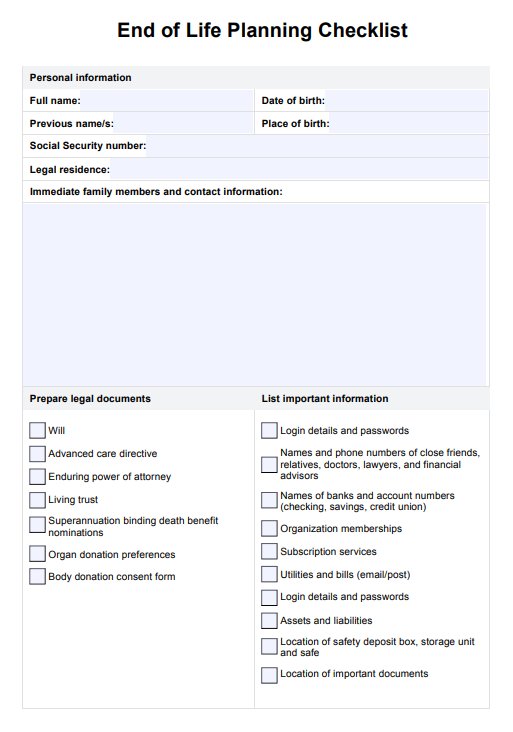Essential paperwork for end of life planning includes a will, which outlines the distribution of assets and appoints guardians for dependents; advance directives or living wills, detailing medical care preferences if one cannot communicate; and powers of attorney, which designate individuals to make financial or healthcare decisions on the patient's behalf.

End Of Life Planning Checklist
Help patients facilitate end of life decisions with our End of Life Planning Checklist. Download a PDF copy here.
End Of Life Planning Checklist Template
Commonly asked questions
Strategies for preparing for end of life include discussing one's wishes with family and healthcare providers, organizing important documents like insurance policies and bank details, and considering pre-planned funeral arrangements to ease the burden on loved ones.
An effective end of life care plan should encompass a living will specifying medical treatment preferences, a durable power of attorney for healthcare decisions, a last will and testament for asset distribution, and instructions for funeral arrangements, ensuring that both healthcare wishes and personal desires are respected.
EHR and practice management software
Get started for free
*No credit card required
Free
$0/usd
Unlimited clients
Telehealth
1GB of storage
Client portal text
Automated billing and online payments











